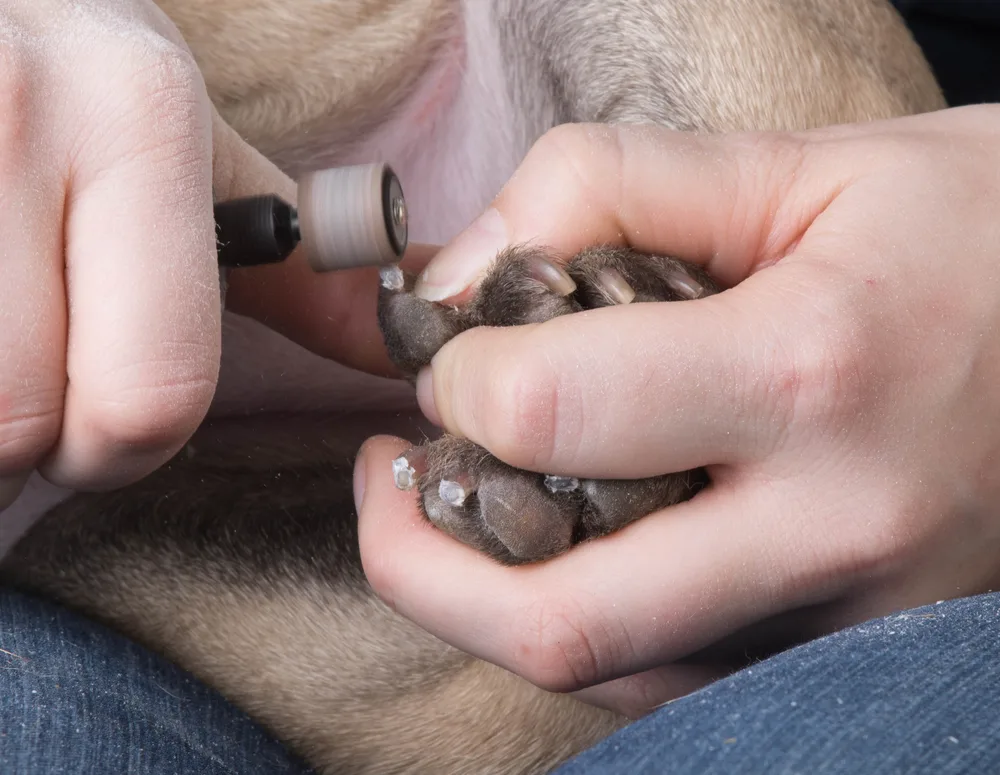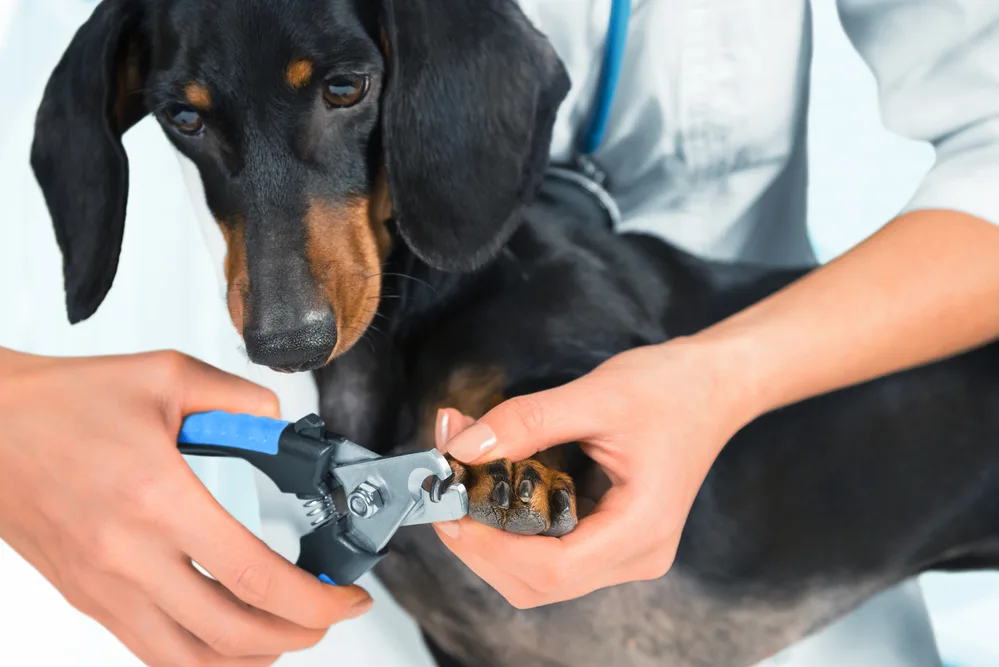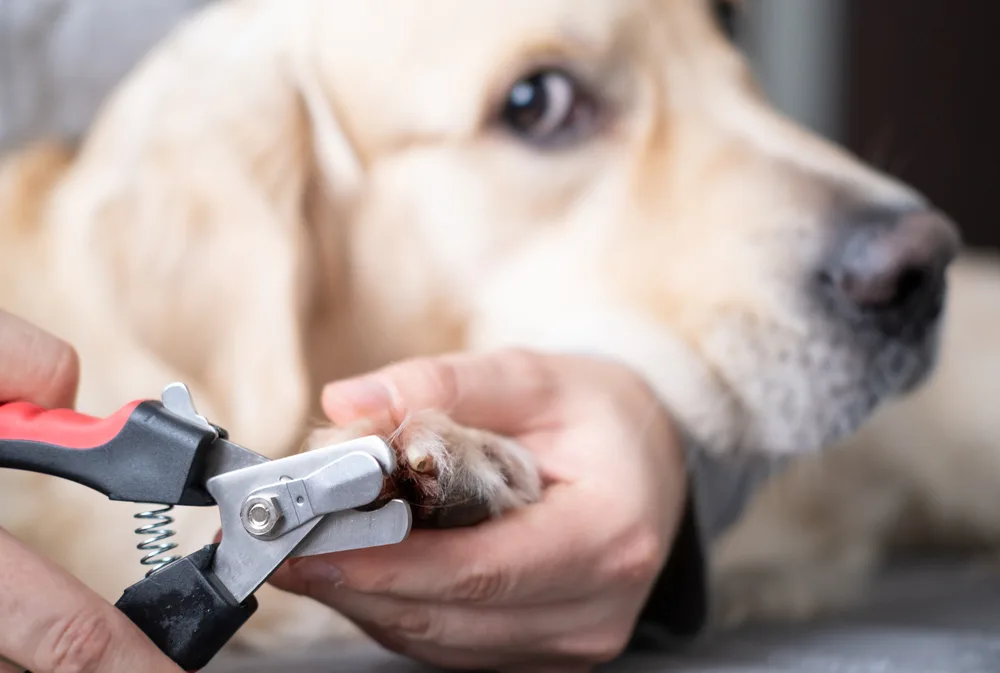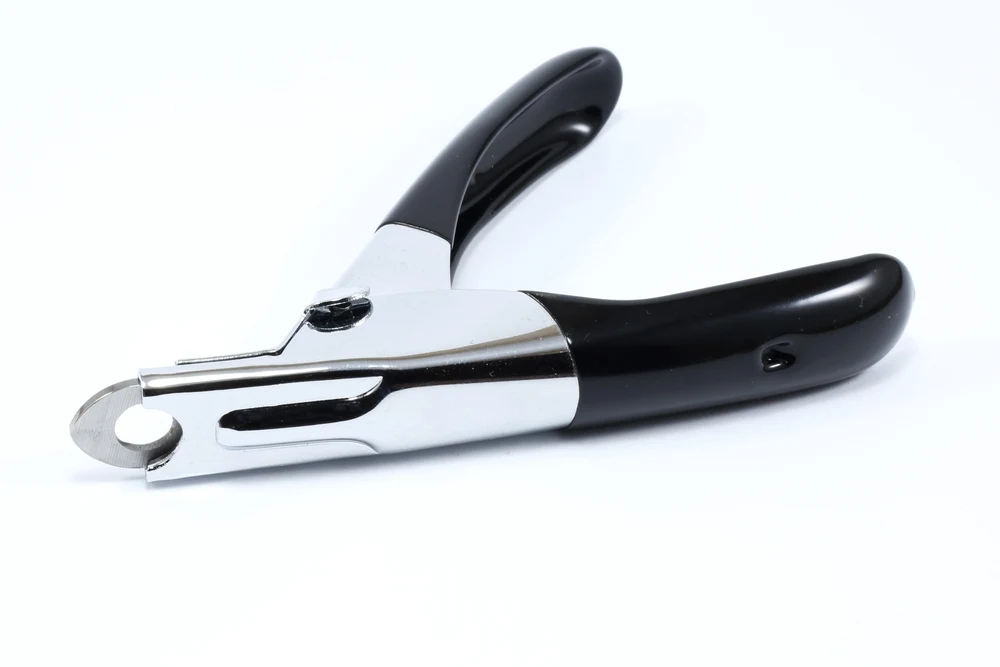Dogs need full grooming routines to look and feel their very best. Every inch needs a little pampering from the top of their heads to the tips of their toes.
If nail trimming isn’t part of your dog’s grooming routine, you’re missing a crucial step. Cutting your dog’s nails keeps them from injuring themselves, other dogs, and people.
However, many owners avoid nail cutting out of fear. After all, dogs don’t always appreciate a good pedicure as people do.
How can you safely maintain your dog’s nails?
You’ll need the right tools and techniques. Starting small, knowing nail anatomy, and using a grinder could help make the process easier. You should also be aware of unsafe practices and avoid them in the future.
“Paw”-dicures don’t have to be a nightmare. Prevent future frustrations using these safety tips to maintain your dog’s nails.
6 Ways To Trim Your Dog’s Nails Safely
Knowing how to cut your dog’s nails isn’t only to make them look good. For example, nail trims make your dog’s baths easier.
Long nails can also be a health hazard. They may scratch themselves, other pets, and people with overgrown claws.
Many dogs with poor nail maintenance experience foot pain. Walking on hard surfaces like concrete is rugged and comfortable when their claws are too long.
Overgrown nails also scratch up floors and get caught in fabrics. At best, they’ll only damage your belongings; at worst, they can rip from your dog’s toe and cause an injury.
Fortunately, you can avoid these problems with an excellent nail-care routine.
Introduce Nail Clippers Early

My dog, Stella, hates when people mess with her feet. Nobody introduced nail clipping to her in a positive way.
By the time she got to me, she deeply distrusted anyone handling her feet. We’ve had to work hard to make nail trimming a peaceful experience.
We could have avoided the work if her previous owners had introduced nail clippers to her early. This way, she would have had time to learn that nail trimming isn’t scary!
Before you cut your puppy’s nails for the first time, show them they’re harmless. Touch the clippers to their paws several times to help them make a positive association. Then, give them a treat for good behavior!
Every successful nail trim starts with a good set of tools. Use the best dog nail clippers and add them to your at-home grooming kit!
Start Small
It’s tempting to take all the excess nails off in one go. However, you’re more likely to cause an injury this way.
Starting small is much more efficient. Begin at the tip of the nail and take off small pieces. This way, you won’t accidentally cut into blood vessels.
Never cut past the nail’s natural curve. Usually, blood vessels called “quicks” end right around this area.
“Starting small” also refers to introducing nail clippers to your dog. If your pup is nervous around nail clippers, try trimming nails in stages; for example, you can do one foot, take a break, and start again later.
Look For the Quick
To cut your dog’s nails safely, you need to recognize the “quick.” Dog’s nails contain blood vessels that bleed and cause pain when you cut into them.
Quicks are easily recognizable if your dog has light-colored nails. You should see a pink color from the base of the nail to its natural curve. Simply make your cut a few millimeters from the pink.
The trouble happens when your dog has black nails. You won’t be able to see the blood vessels from the outside.
This is where “starting small” comes into play. Trim the tip of your dog’s nails; you should see dry, flakey material.
Keep cutting until the center of your dog’s nail starts looking wet a spongey. This change in texture usually means you’re getting close to the quick. Once you see this sign, stop cutting.
Use a Nail Grinder

Did you know those clippers aren’t the only tools you can use to cut your dog’s nails? Grinders also work well to shorten nails while smoothing and rounding edges.
Also known as dremels, nail grinders are excellent options if your dog scratches the floor. Jagged edges won’t damage hardwood flooring and carpet if you can smooth them out.
Some dogs prefer nail grinders because they don’t have that tell-tale “snap.” Dremels are more gentle, making them perfect for anxious pups.
Using a nail grinder comes with a learning curve. Watch this video to learn how to Dremel your dog’s nails safely!
Reward Good Behavior
Your dog won’t hate nail trims forever. Tolerating nail clipping is a teachable skill. The key is rewarding good behavior.
It’s tempting to scold your pup when they wiggle and worm their way out of a nail trim. However, dogs see any attention as a positive reward.
Never let your dog get away with escaping your grasp. You should only let go of them if they hurt you or themselves.
Hold on tight and wait for the tantrum to pass. Then, try trimming more of the nail. Use verbal and physical praise to coach them along the way.
Once you finish a nail, give your pooch a yummy treat! After a while, your dog will associate nail trims with praise and cookies instead of fear.
Get Professional Help

If you have an extra-tough case on your hands, seek professional help. Groomers and veterinarians have special tools and techniques to make the process painless.
Groomers know how to restrain even the most rambunctious pups. Some even have a special “touch” that eases canine anxiety.
Veterinarians can use sedatives and other medications to make your dog “chill out.” They may even put them entirely under anesthesia to get a close clip.
You should never give medication without consulting a vet. Professional help is usually a last resort; however, it’s worth it if you can avoid injury and frustration.
4 Unsafe Practices To Avoid

While working for a groomer and vet, I saw my fair share of dogs with nail-cutting anxiety. In my experience, the following breeds were the most common offenders:
| Dog Breeds |
| Doberman Pinchers |
| Pugs |
| French Bulldogs |
| Dauchunds |
Safe nail trims are necessary if you’re sick of your dog scratching your bed sheets and ruining your stuff. However, it’s not enough to follow all the proper techniques.
You need to be aware of unsafe practices to avoid them. If you notice these steps in your routine, cut them out immediately.
Using Dull Nail Clippers

Your nail clippers need to be sharp to be effective. Dull trimmers may snag and pull nail pieces, causing pain and discomfort.
You can’t get a clean cut with a dull blade. Instead, you’ll get sharp, jagged edges that make your entire nail trim meaningless.
It’s hard to sharper nail clippers. Most owners replace their trimmers every few months since they don’t usually cost much.
Never let your clippers sit in a wet environment. Moisture will encourage rusting, which decreases your blades’ sharpness.
Taking Too Much Off
We’ve talked a lot about starting small and working in increments. This way, you won’t cut quickly and cause bleeding.
Broken blood vessels are mostly painful. However, they’re also considered open wounds, leaving your dog vulnerable to infections.
Many dog nail disorders start with trauma and infections. Working in small sections will decrease your chances of causing an injury.
If you accidentally cut the quick, don’t worry. Hold a towel to the area until the bleeding stops; clean the wound with soap and warm water.
You could also invest in “quick powder,” which works to clot the area quickly. This product also has antimicrobial properties so that the nail will stay clean and infection-free.
Not Restraining Your Dog
Your pup needs to sit still to trim their nails safely. That means you’ll need to master the art of restraint.
Get a firm grip on your dog’s leg. Bend their wrist in its natural direction; never try and twist your dog into uncomfortable, unnatural positions.
Use your arms to keep your dog close to your body. Never pull on their legs to get them closer to you or let them wander away.
You risk cutting into the quick if your dog jerks away at the last second. Try and anticipate their movements by reading their body language; a comfortable pup will relax in your hold and won’t resist.
Cutting an Anxious Pet Yourself
Unless you understand dog anxiety well, you shouldn’t attempt nail trims on nervous dogs alone. It might help to get a second pair of hands involved.
Your partner can help hold your pup steady while you work with their feet. They can also warn you about questionable body language that could point to an outburst.
In extreme circumstances, professional help may be your only answer. However, letting a groomer or vet handle nail trims is much safer if your dog gets aggressive or dangerously anxious.
FAQs
How do I keep my dog’s nails healthy?
Regular nail trims will keep their nails healthy. Feeding a diet high in protein and fiber also strengthens keratin. You could also try biotin supplements to keep nails strong.
Should my dog’s nails be touching the floor?
Not necessarily. Some dogs have long quicks, so their nails may still graze the floor. However, a dog with short quicks can be short enough to avoid the ground.
How can I keep my dog’s nails short without clipping?
Frequent walks on hard surfaces act as a natural nail grind. Walk your dog on concrete to file their nails efficiently.
Bottom Line
Ultimately, dog nail trims shouldn’t be a nightmare. With the right technique, you can take care of their grooming needs right from your home!
